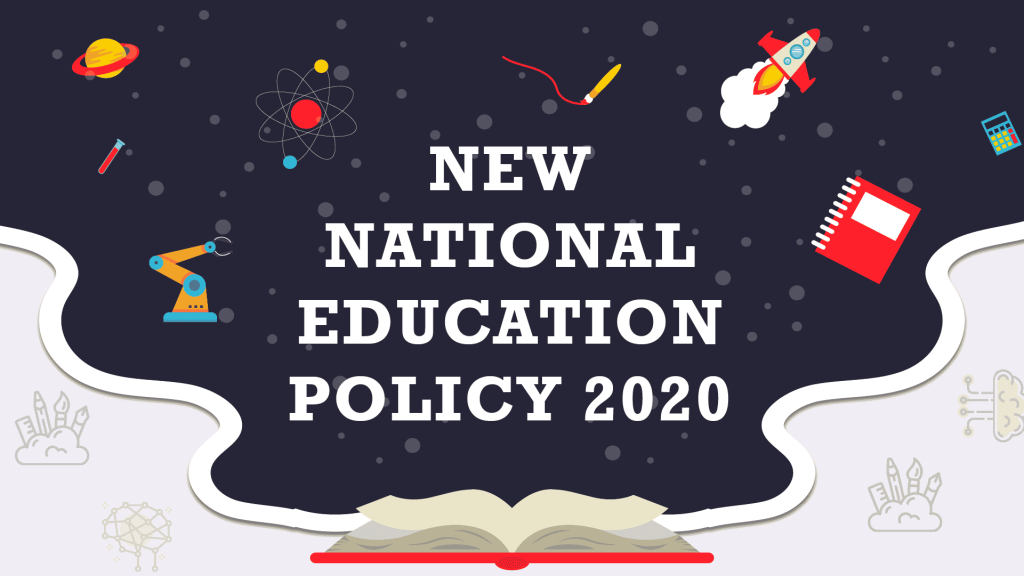✅ The 5+3+3+4 Education System Explained: NEP 2020’s New School Structure in India
The National Education Policy (NEP) 2020 introduced a game-changing shift in India’s school structure by replacing the long-followed 10+2 system with the modern 5+3+3+4 education system. This reform is designed to make learning more holistic, flexible, skill-based, and aligned with childhood development stages.
Instead of focusing only on examinations and marks, NEP 2020 promotes how to think, not what to think — a major shift toward creativity, critical thinking, and practical knowledge.
✅ What is the 5+3+3+4 Education System?
This model restructures schooling into four scientifically designed stages based on a child’s cognitive growth — from age 3 to 18. There are no additional years, but preschool education now officially becomes a part of formal education, ensuring strong early-stage learning.
| Education Pattern | Age Group | Classes | Focus Area |
|---|---|---|---|
| 5 years – Foundational Stage | 3–8 years | Preschool, Class 1–2 | Play-based learning, language skills |
| 3 years – Preparatory Stage | 8–11 years | Class 3–5 | Activity-based, reading, writing, math thinking |
| 3 years – Middle Stage | 11–14 years | Class 6–8 | Conceptual learning, exposure to sciences, arts |
| 4 years – Secondary Stage | 14–18 years | Class 9–12 | Multidisciplinary learning, flexibility, board exams |
This framework supports universal education and extends the Right to Education Act coverage from 3 to 18 years.
🧩 5+3+3+4 vs. Traditional 10+2: Key Differences
| 10+2 System | 5+3+3+4 NEP System |
|---|---|
| 2 learning stages | 4 learning stages |
| Covers ages 6–18 | Covers ages 3–18 |
| Focus on classroom teaching & exams | Focus on competency-based, creative learning |
| Limited flexibility | Freedom to choose subjects earlier |
| No preschool included | Preschool is part of formal schooling |
NEP bridges the gap between curricular and extracurricular learning, promoting skills, values, and overall personality growth.
📌 Breakdown of Each Stage
✅ 1️⃣ Foundational Stage (5 Years)
(Preschool + Class 1–2 | Ages 3 to 8)
Play-based and activity-driven learning
Early literacy & numeracy (FLN) priority
Focus on mother tongue/regional language
Development of social skills, curiosity, and communication
This stage builds the most important base for lifelong learning.
✅ 2️⃣ Preparatory Stage (3 Years)
(Class 3–5 | Ages 8 to 11)
Shift to classroom instruction with joyful learning
Introduction of three-language formula
Strengthening science, math, arts, and physical education
Cognitive development through practical activities
✅ 3️⃣ Middle Stage (3 Years)
(Class 6–8 | Ages 11 to 14)
More subject-focused learning
Exploratory, experiential classrooms
Coding, vocational training introduced from Class 6
Moving away from rote memorization to concept clarity
✅ 4️⃣ Secondary Stage (4 Years)
(Class 9–12 | Ages 14 to 18)
Multidisciplinary subject selection
No forced separation into Arts, Science, Commerce
Students can combine — e.g., Physics + Economics or History + Accountancy
Focus on critical thinking, career skills, internships
Board exams twice a year with flexibility
This allows learners to shape their unique academic path.
📝 Exam Pattern Under NEP 2020
Assessments in Classes 3, 5, and 8 to track progress
Continuous evaluation in other classes
Board exams more flexible — appear only for subjects completed
Semester system in Class 11–12
Focus on:
✅ Problem-solving
✅ Conceptual learning
✅ Real-world application
Students gain confidence and ownership in learning while reducing exam pressure.
🎯 Benefits of the 5+3+3+4 System
✔ Strong foundation in early childhood
✔ Equal access to high-quality schooling for every child
✔ Personalized learning and freedom of subject choice
✔ Enhanced skill-based and multidisciplinary learning
✔ Better readiness for future jobs and higher education
✔ Play-based and enjoyable classrooms at younger age
It also encourages career counseling and guidance so students can make informed future decisions.
✅ Final Thoughts
The 5+3+3+4 education structure modernizes Indian schooling and prepares students for a rapidly evolving world. From the foundational years to higher secondary, NEP 2020 ensures learning becomes inclusive, skill-oriented, engaging, and future-ready.
This transformation aims to empower India’s youth with better knowledge, creativity, adaptability, and global competitiveness — bringing Indian education at par with leading international models.
If you’re an educator, school administrator, or parent, embracing this new framework is the path to helping students thrive academically and personally in the years ahead.
References:
Official NEP 2020 Policy PDF
National Education Policy 2020 – Full Document (MoE) (Education Ministry of India)About NEP 2020 (Government of India, MoE page)
About National Education Policy | Ministry of Education, Government of India (Education Ministry of India)Press Information Bureau Highlights of NEP 2020
Highlights of New Education Policy-2020 – PIB (Press Information Bureau)Research & Analysis Paper
India’s new National Education Policy: Evidence and Challenges (RISE Programme)Educational Portal / Implementation Info
NEP 2020 – Innovate India MyGov Portal (innovateindia.mygov.in)








